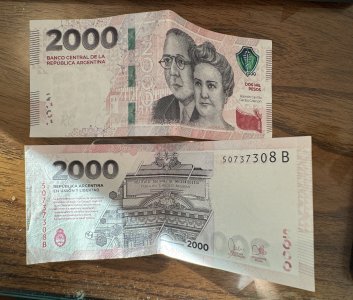earlyretirement
Moderator
Finally we will have bigger notes. It's a royal pain carrying around the 1,000 peso note and they almost never have the bigger 2,000 peso note in circulation. I thought I read somewhere that they were going to do 20,000 and 50,000 peso note so I hope that is the case. By the time this inflation is over, this may not be anything.

 www-analisisdigital-com-ar.translate.goog
www-analisisdigital-com-ar.translate.goog

El Banco Central aprobó la emisión de billetes de $10.000 y $20.000 | Análisis
La emisión de estas denominaciones "facilitará las transacciones entre los usuarios, hará más eficiente la logística del sistema financiero y permitirá reducir significativamente los costos de adquisición de los billetes terminados", indicó el BCRA.
 www-analisisdigital-com-ar.translate.goog
www-analisisdigital-com-ar.translate.goog




